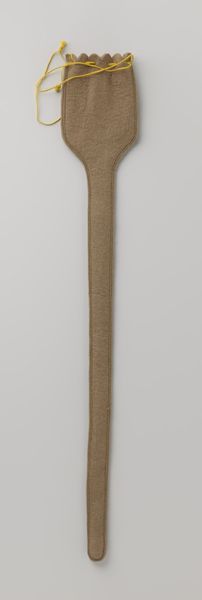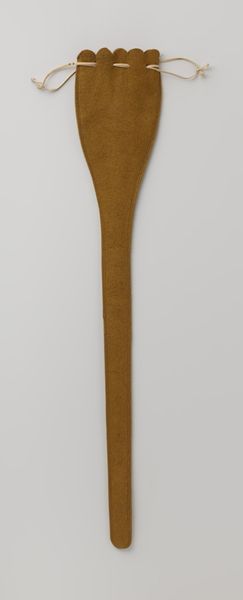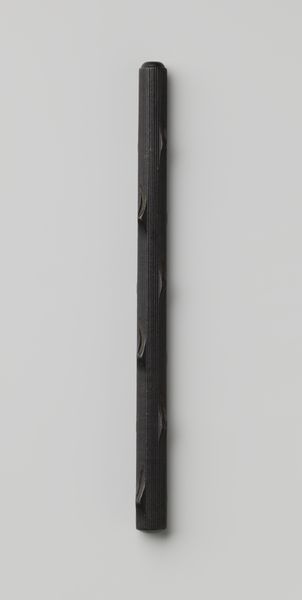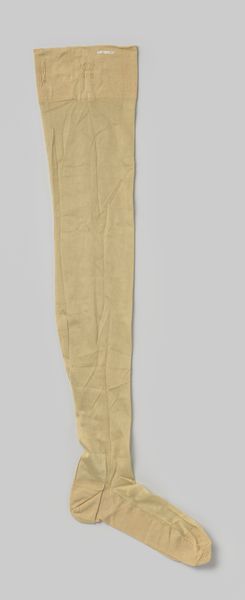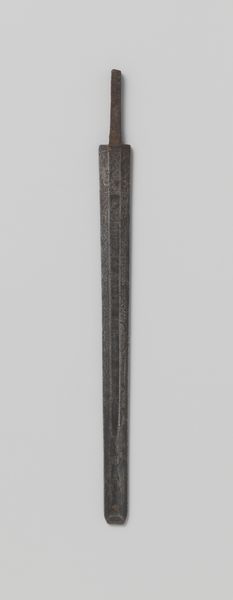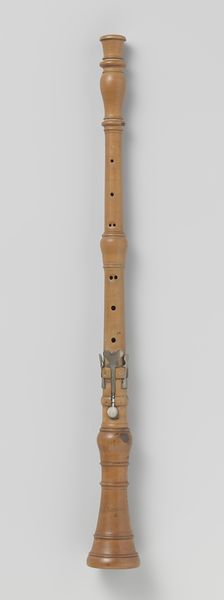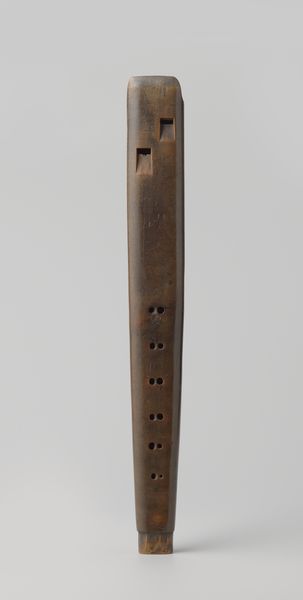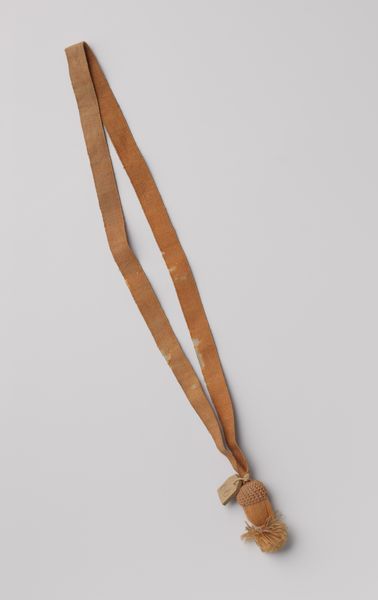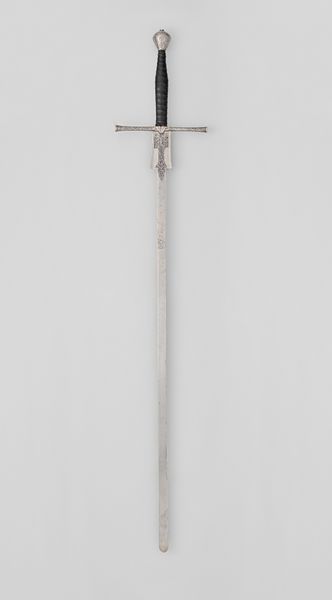
Etui voor degen in schede behorend bij het ambtskostuum van Dr. A.H.J. Lovink c. 1850 - 1950
0:00
0:00
mixed-media, textile
#
mixed-media
#
textile
#
decorative-art
Dimensions: length 102 cm, width 17 cm
Copyright: Rijks Museum: Open Domain
Curator: Here we have a "Etui voor degen in schede behorend bij het ambtskostuum van Dr. A.H.J. Lovink," or a scabbard case for Dr. Lovink's ceremonial sword. Made with textile and other mixed-media elements, this piece by Fa. Frans Pauwels likely dates somewhere between 1850 and 1950. Editor: You know, just glimpsing it, I felt a little like I was looking at a kind of primitive windsock, like something hopeful straining for the sky. Curator: Yes, it's intriguing to consider this scabbard beyond its mere functionality. Think about the crafting process involved. What kind of labor went into choosing the textile, sewing the seams, ensuring that it was strong enough to contain and protect a sword while also visually representing status and decorum? Editor: Absolutely, and this is not cold, machined decorum. I love the imperfections, the slight wobbles. There's something so deliberately, warmly human about this piece. I feel like there’s such dignity, perhaps in contrast to the sword, in the creation of the textile case itself. Curator: Precisely. The materials used, primarily textiles, tell a story about available resources, trade routes, and potentially even the social standing of those who created and used it. It's fascinating to consider how the economics of textile production might influence the overall design. Was the embellishment deliberately restrained because of material cost or societal restraint, or for other reasons? Editor: What I find quite appealing is how muted the whole piece is. The restrained decorative style speaks volumes, almost whispering about a period where formality reigned supreme. Did it soften the impression of Dr. Lovink somehow, by encasing a symbol of power within something so soft? Curator: An excellent observation. This blending of power and practicality reflects a very particular sensibility in art, highlighting material choices as well as the society that valued the symbolic gesture and its social display. Editor: Thinking about it makes you wonder if there are parallels in our modern, everyday objects, designed to package technology in a comforting way, like our phones, so very separate from function and impact. Thanks for untangling so much for me, material by material! Curator: It was my pleasure, the history of objects helps tell larger cultural histories and trajectories, always ripe for reimagining the narratives around them!
Comments
No comments
Be the first to comment and join the conversation on the ultimate creative platform.
